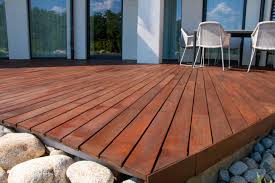
The Benefits of Using Pressure-Treated Deck Boards
Deck boards are a fundamental element of any deck providing the base on where you walk and take pleasure in the outdoors. The selection of the appropriate deck boards is essential to the durability, aesthetics, and general happiness with the deck. Here’s a comprehensive guide on everything you should be aware of regarding Deck boards (Deski tarasowe).
1. Types of Deck Boards
Deck boards come in several materials, each of which has distinct advantages and drawbacks:
Wood deck boards: Traditional and well-known wooden deck boards come in a range of species, including cedar redwood, along with pressure-treated pine. Wood has natural beauty and can be stained or painted. However, it requires regular maintenance to avoid issues such as warping, splintering, and the onset of rot.
Composite Deck Boards: Created by blending wood fibers and plastic the composite deck board is low-maintenance, and resistant to fading, staining, and insects. They are available in a variety of colors and textures that mimic natural wood, though they are more expensive than wood.
PVC deck boards: PVC deck boards are 100% plastic, making them extremely resistant to insect, water and mold. They’re low-maintenance and are available in a range of styles. However, they are more costly and may not have the same natural look as wood.
Aluminum Deck Boards They’re extremely robust and practically maintenance-free. They’re not susceptible to rust or weather conditions but aren’t cheap and might not provide the warmth of wood.
2. Deck Board Sizing and Spacing
Deck boards typically come in sizes of 2×6 and 5/4×6 inches but customized sizes are also available. The distance between boards on decks, also known as the “gap” is essential to allow water drainage and to prevent debris accumulation. A gap of 1/8 inch to 1/4 inch is recommended but this could be different based on the material and local conditions of the climate.
3. Installation Considerations
The correct installation is crucial to a long-lasting deck. Make sure to:
Select the best fasteners for your deck Choose fasteners that are compatible with the deck material. For instance, composite decks usually require special screws to avoid damage.
Allow for Expansion and Contraction Allow for expansion and contraction of materials like wood and composite can expand or contract with temperature variations, so make sure you leave sufficient gaps at the corners.
Follow the manufacturer’s guidelines Follow the instructions of the manufacturer for installation to guarantee warranty coverage and maximum performance.
4. Maintenance and Care
The requirements for maintenance of deck boards are different depending on the type of material. It is recommended to seal or stain your wood regularly, PVC and composite boards require periodic cleaning using soap and water. Be sure to check your deck for indications of wear or damage and take action to extend its life.
Selecting the best deck boards involves considering your budget, aesthetic preferences and maintenance willingness. If you are aware of your options and observing appropriate installation and maintenance procedures you can build an attractive and long-lasting outdoor space that enhances your lifestyle and home.